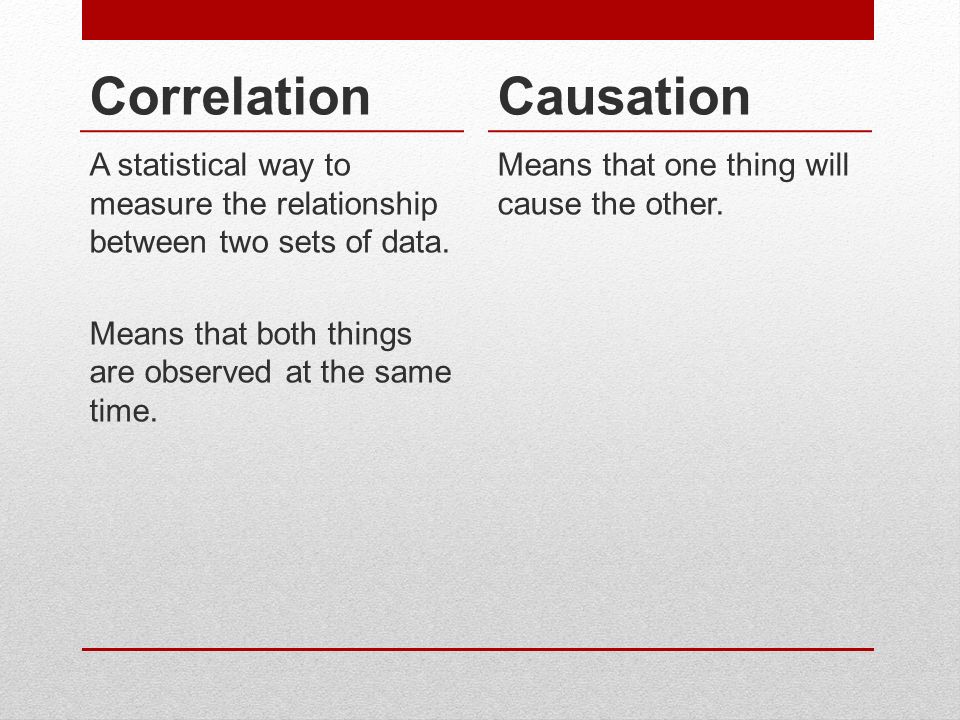
Temporality - the outcome follows the exposureīiological gradient - dose-response relationship Specificity - the association is limited to precise exposures and outcomes Strength of association can be demonstrated by valid statistical testsĬonsistency - the association has been demonstrated repeatedly in independent studies

CORRELATION VS CAUSALITY SERIES
Historically, the association between smoking and lung cancer spurred the seminal paper by Sir Austin Bradford Hill that proposed a series of nine aspects (often called “criteria”) that should be considered before a conclusion of causation is drawn: In epidemiologic research, the aspects of an association between two variables that guide a conclusion of cause and effect, have been particularly well studied. Physical activity is here a confounding variable and the common cause to both investments in sports gear and reduced risk of developing heart failure. A hypothesis would be that people buying sports gear are physically active, a known protective factor. If we conduct a study and observe that individuals that invest heavily in sports gear have reduced risk of developing heart failure, we cannot conclude that buying sport gear protects against cardiovascular disease (causal relationship). Association between two factors can occur both with and without a causal relationship. Association does not mean causationĬausation requires that there is an association between two variables, but association does not necessarily imply causation. Pearson's correlation assumes that both variables are normally distributed, whereas Spearman's (rank) correlation is non-parametric.

For quantitative and ordinal data, there are two primary measures of correlation: Pearson's correlation (r), which measures linear trends, and Spearman's (rank) correlation (s), which measures increasing and decreasing trends that are not necessarily linear, but can be U-shaped or J-shaped. Correlations can be linear or non-linear. The correlation coefficient is a numerical value that refers to the extent to which two variables move together in an increasing or decreasing trend. Correlation is measured by a correlation coefficient, and requires that there is an association between two variables, but association does not imply correlation. It is important to understand that association is a non-technical term. In order to establish a causative relationship, several criteria must be fulfilled, as discussed in this article. The correlation coefficient is the measure used for the strength of the association. Correlation, on the other hand, is a statistical measure which determines the co-relationship or association between two variables. However, association is not a technical term, and merely means that there is some sort of general relationship between two variables.

In every-day language, association and correlation are used as synonyms.

It is easy to confuse association and correlation.


 0 kommentar(er)
0 kommentar(er)
